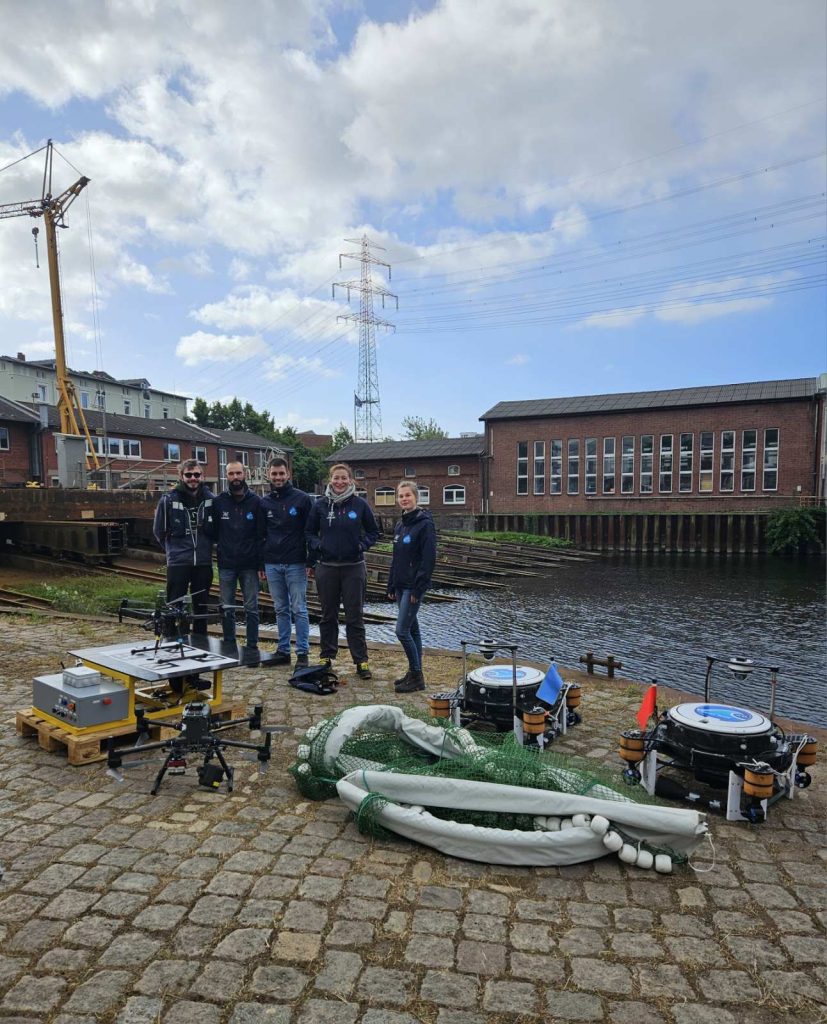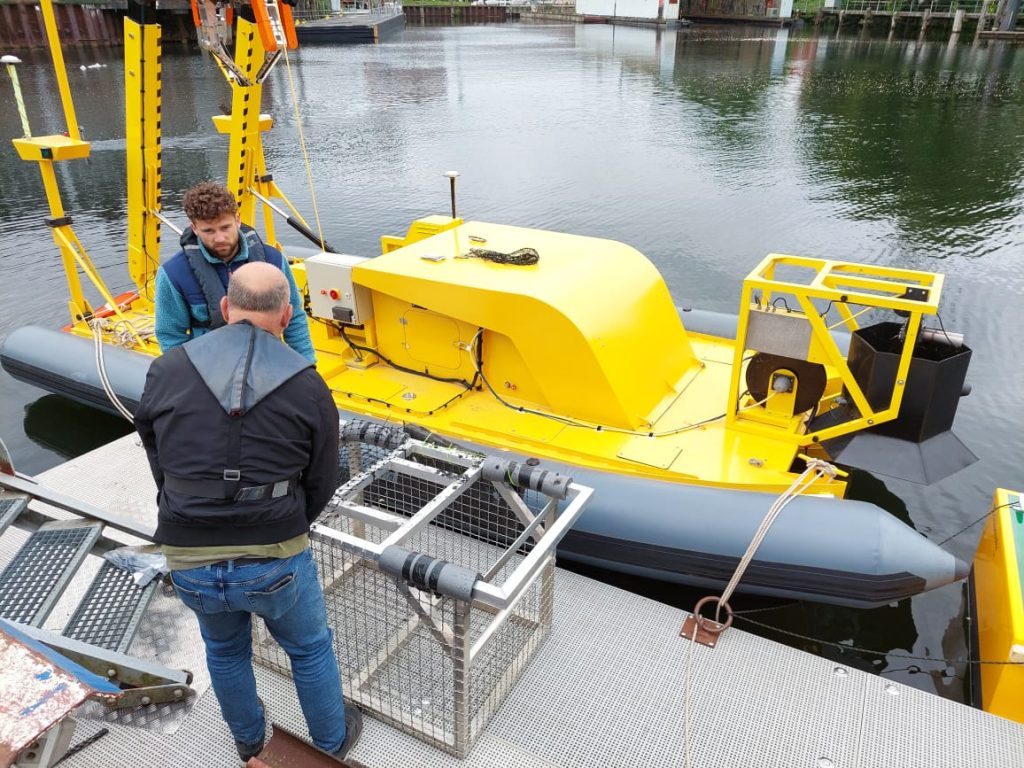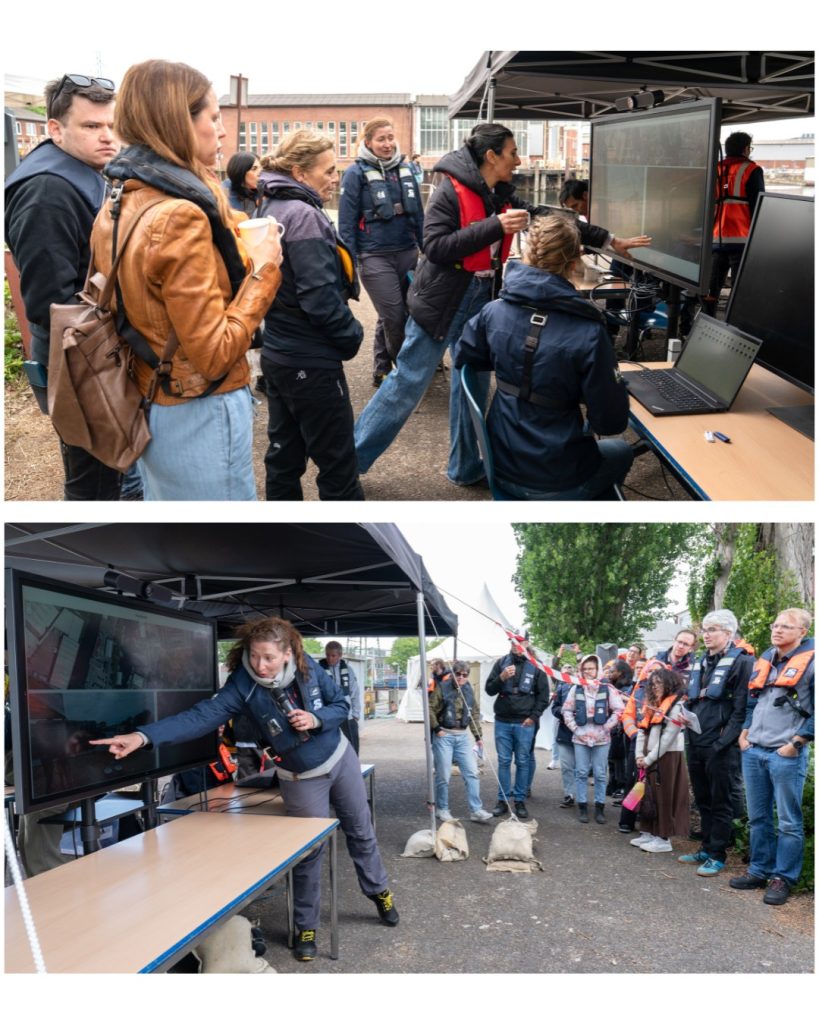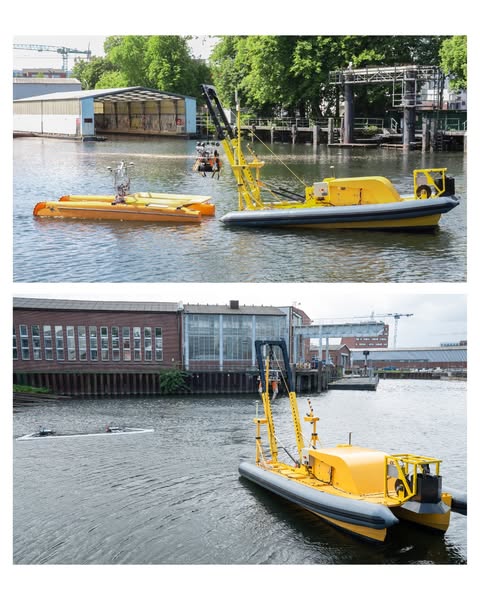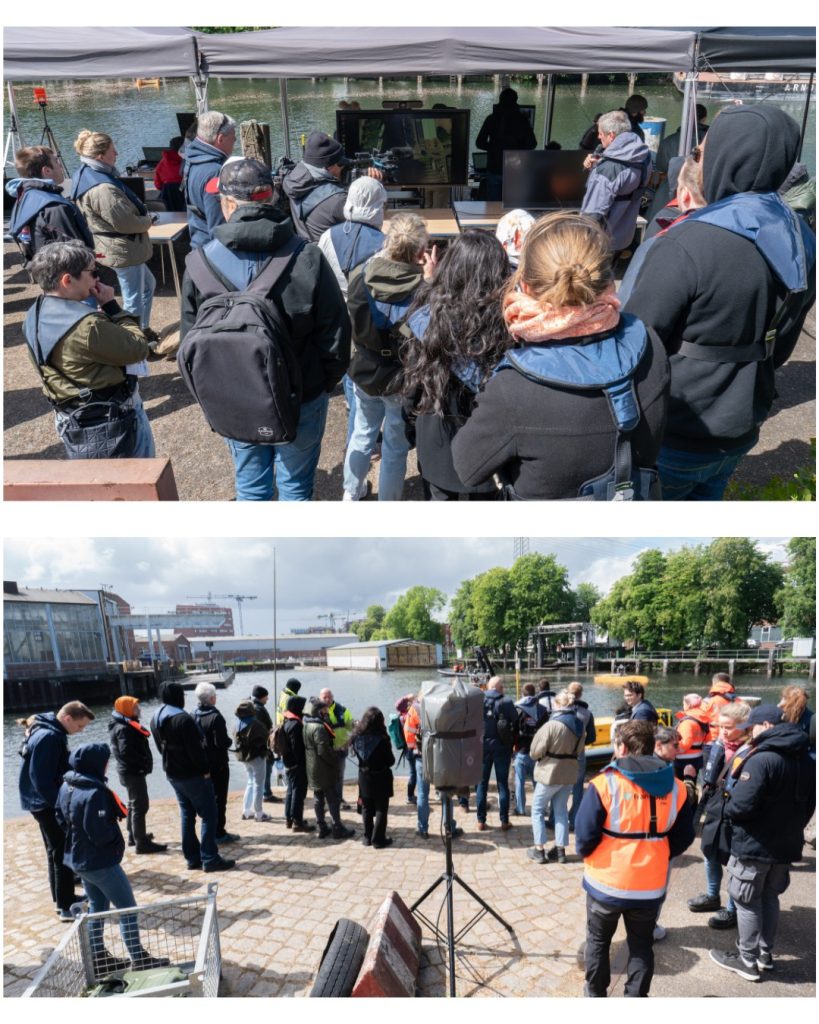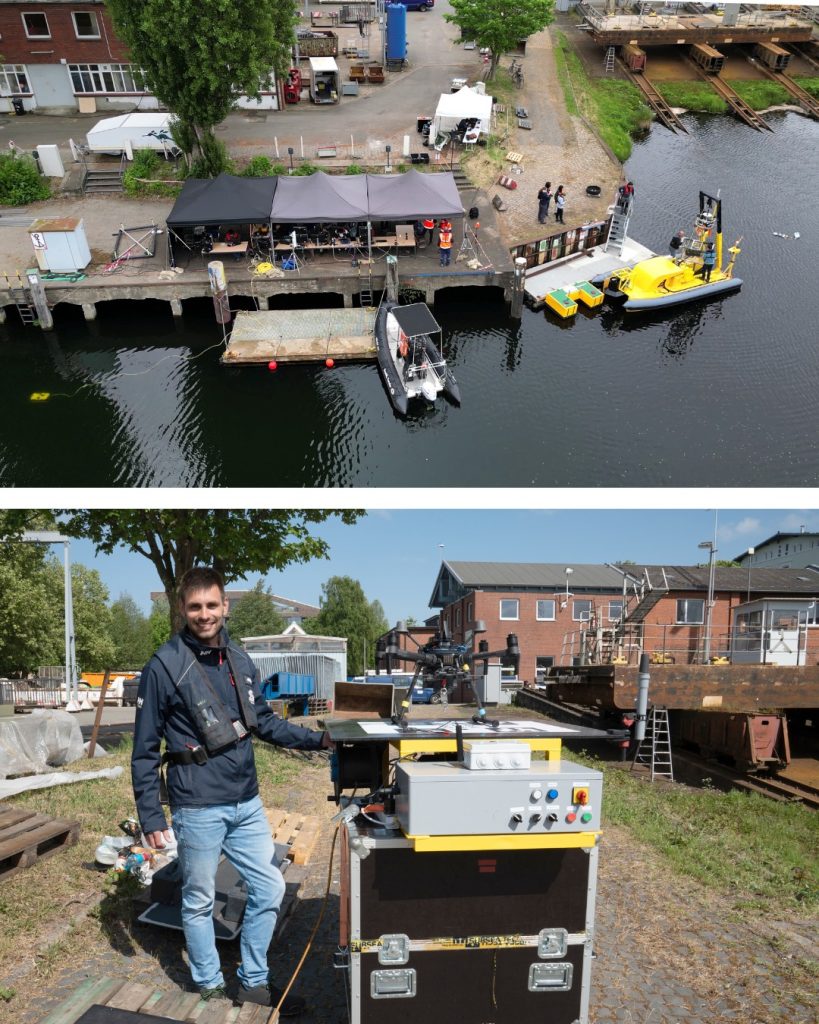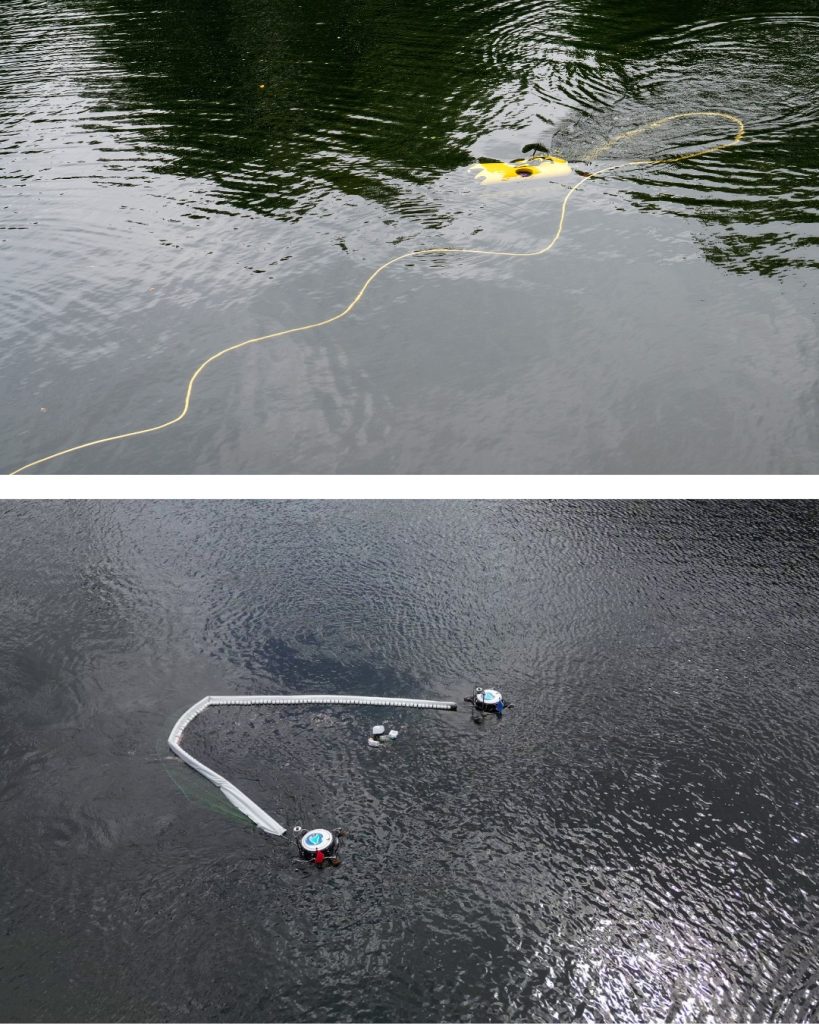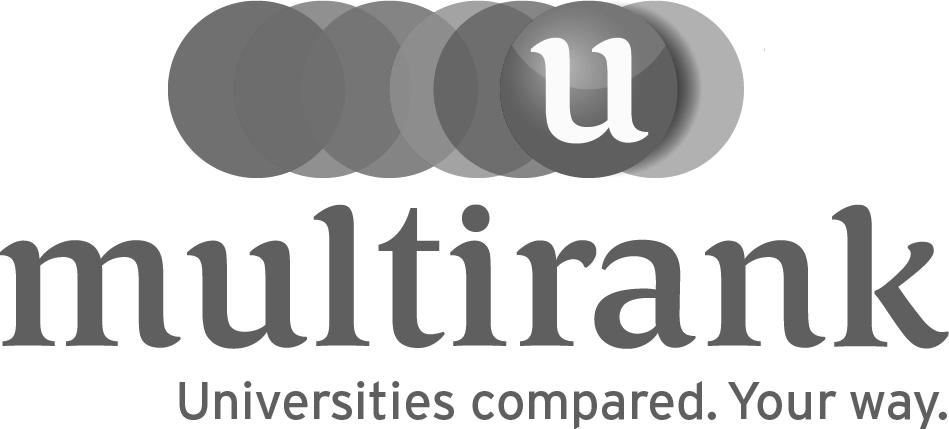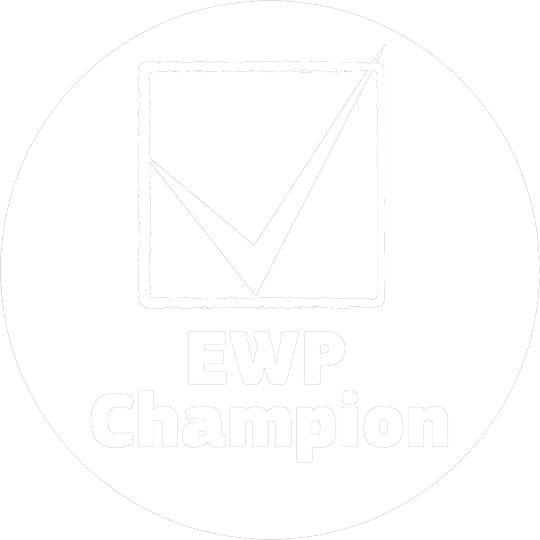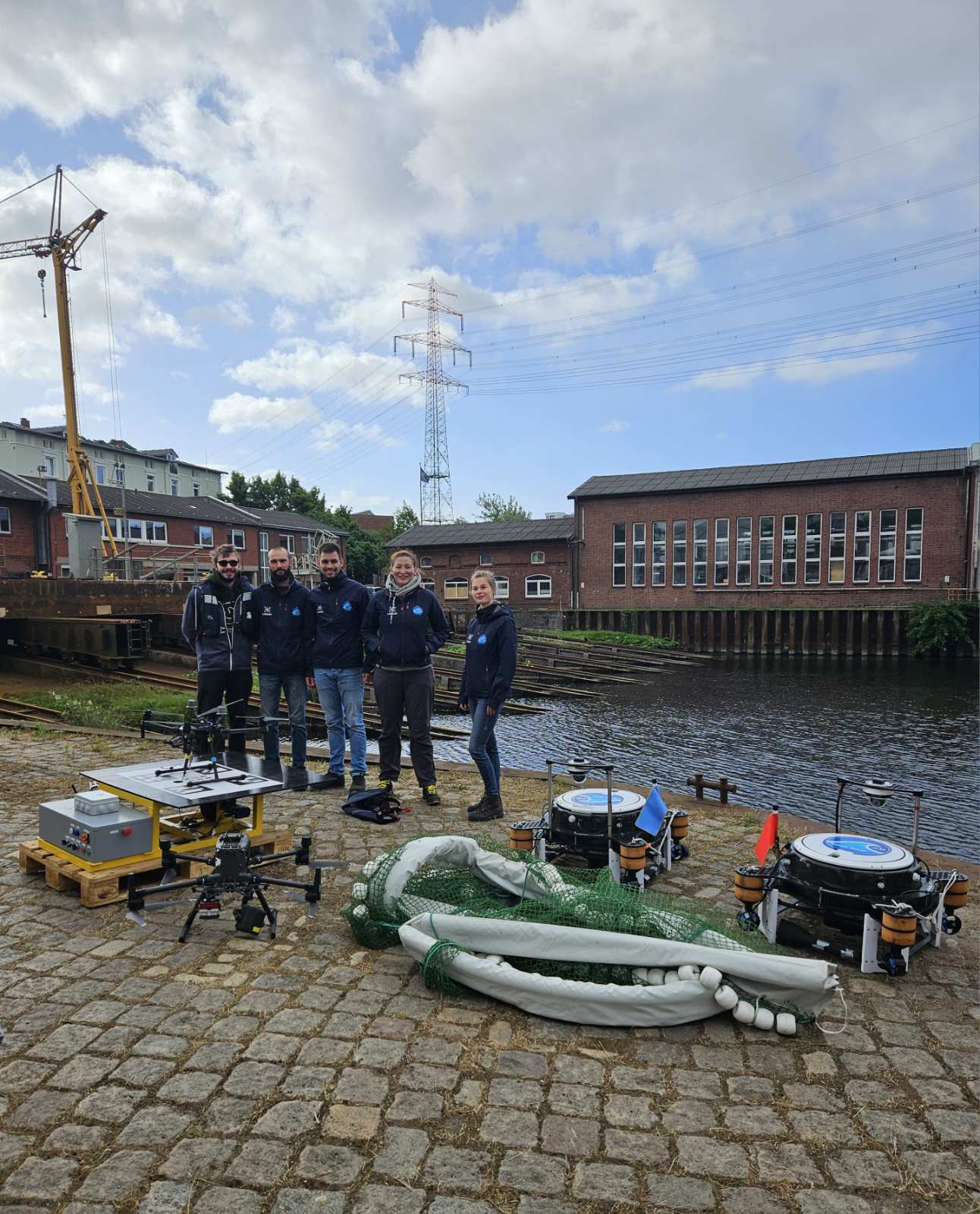
From May 12th to 21st, 2025, the SeaClear 2.0 consortium conducted a comprehensive series of internal pilot tests in Hamburg, Germany, culminating in the 1st Live Showcase of the SeaClear 2.0 robotic system on May 22nd at the Hamburg Port Authority.
During these ten days, experts and technical teams from the consortium – including representatives from Hamburg Port Authority, TU München, Subsea Tech, Fraunhofer CML, the University of Dubrovnik – LARIAT, Universitatea Tehnică Cluj-Napoca, and TU Delft – collaboratively tested, calibrated, and refined the system’s multiple autonomous components. These included unmanned surface vehicles (USVs) – SeaCat, the mothership and SeaDragon, the collected litter tender; SeaBees, small USVs for collection of surface litter; an aerial drone – SeeHawk, and a smart robotic grapple – mounted on the SeaCat together with a compact and agile mini-Tortuga, all coordinated via a centralized “Operators’ Station” designed for integrated system control.
The internal pilot phase provided a vital platform for system validation under real-world port conditions. Tests involved multiple coordinated scenarios such as autonomous docking maneuvers, object detection and classification, and collection of marine litter from both surface and seabed.
The final day of the pilot was followed by the 1st Live Showcase of SeaClear 2.0 robotic system, a landmark public demonstration attended by consortium members and invited stakeholders. During the showcase, SeaClear 2.0’s full robotic ensemble – including SeaCat, SeaDragon, the SeaBees, SeeHawk, and the compact yet capable mini-Tortuga and the grapple – performed live operations to detect, identify, and collect marine litter.
Funded under the Horizon Europe programme, SeaClear 2.0 is the continuation of the SeaClear 1.0 project and addresses the urgent issue of marine litter, with nearly half a million tons of plastic estimated to enter European seas each year. The project aims to deliver a holistic solution by integrating technological innovation with community engagement and policy development. The initiative combines robotic perception, AI, marine engineering, and social science to enable intelligent, autonomous waste removal from coastal and port environments.
The consortium, coordinated by Delft University of Technology, comprises 13 partners from 9 countries, drawing expertise from different fields; autonomous systems, environmental ecology, marine operations, public engagement, and circular economy strategies. The University of Dubrovnik, through its interdisciplinary team led by Prof. Dr. Ivana Palunko (LARIAT), contributes extensively to the development of intelligent autonomous control systems, ecological assessment, and feasibility studies to ensure the system’s technological, environmental, and economic sustainability.
Hamburg pilot and live demonstration reaffirm SeaClear 2.0’s ambition to become a leading force in autonomous marine litter collection and reinforce the EU’s commitment to smart, sustainable ocean technologies. In Hamburg pilot from UNIDU-LARIAT the team was: Vicko Prkačin, Matej Jelavić, Anna Panfil, Ante Žile and Ivana Palunko. UNIDU-LARIAT team focus are the SeaBees and the SeaHawk.
Stay connected as SeaClear2.0 continues its journey toward cleaner seas and smarter solutions.
